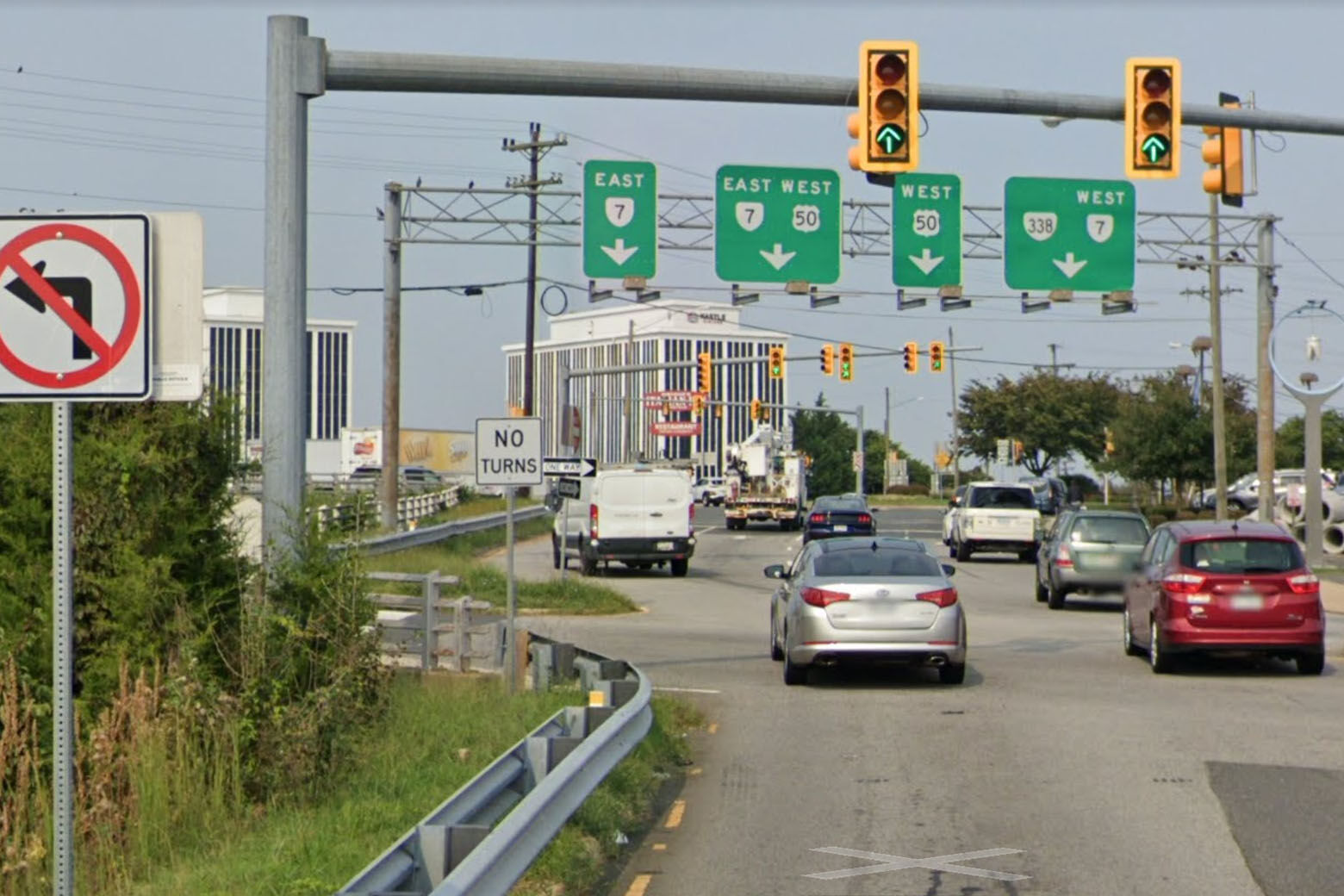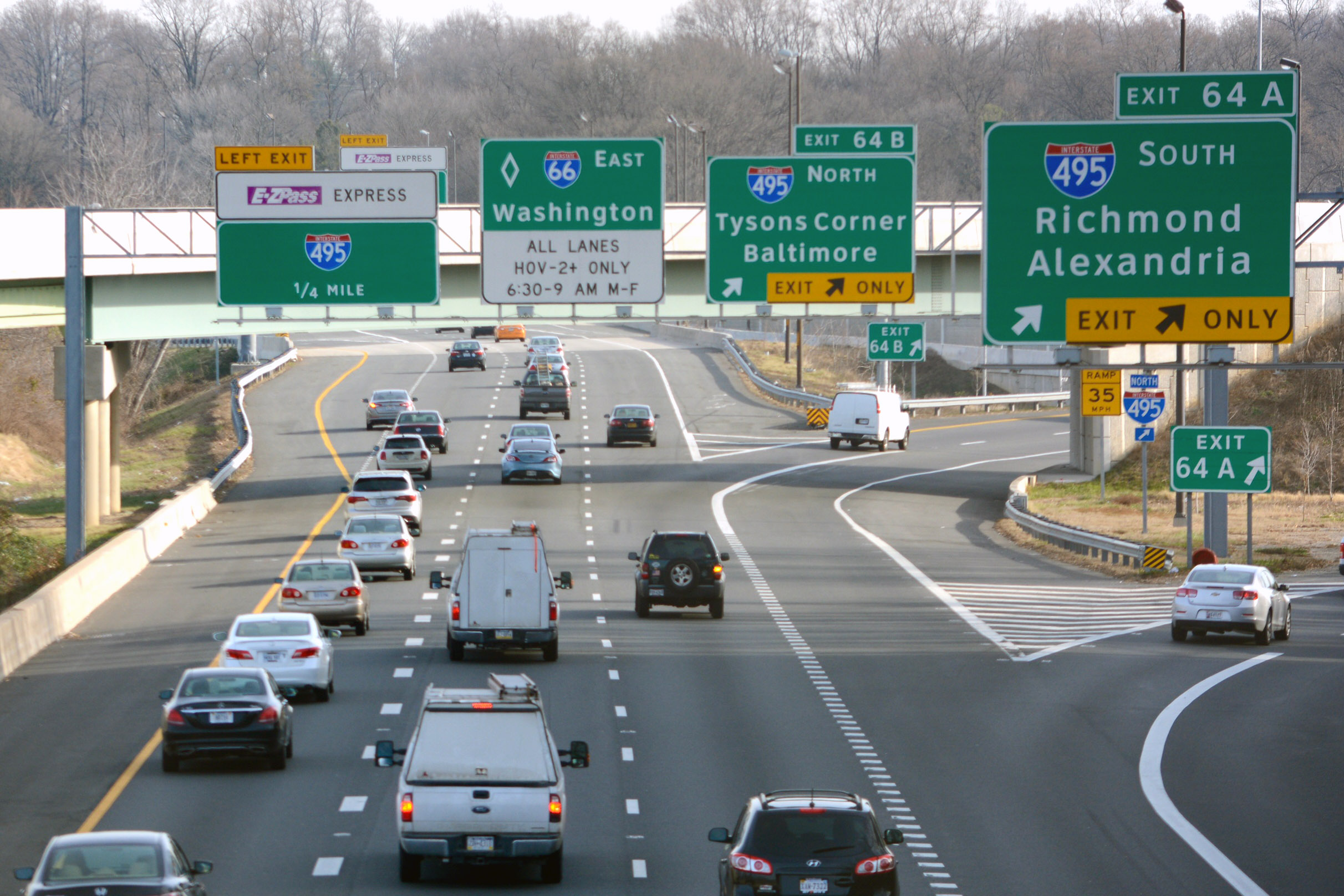It’s hard to think of a more confusing and difficult area to drive through than Seven Corners, Virginia
A “ring road” plan to make it easier to navigate exists — what’s not clear is whether it will be built while many of us are still around to drive it.

“Route 50 goes underneath, you have Route 7, and Wilson Boulevard,” said Michael Garcia, Fairfax County Department of Transportation’s chief of the transportation planning section. “Then you have Sleepy Hollow, Hillwood Avenue and the ramps from that interchange all coming together.”
And that equals seven routes, leaving confounded drivers trying to sift through road signs, lane markers, arrows, traffic signals, resulting in a constant “huh?” for drivers.
Not to mention non-drivers trying to get through Seven Corners, said Garcia. “We realized there’s no bike facilities going through the interchange and very minimal pedestrian facilities, and they were utilitarian at best.”
For decades, transportation officials have been trying to improve traffic through Seven Corners.
“Signage has been installed to try to make it a little more clear, to help you be in the correct lane,” said Garcia. “We’ve probably maximized the signal timing to the extent we can.”
Still, it’s a mess.
“We understand there’s only so much that we can really do with what we have existing today,” said Garcia.

What went wrong?
There was a time it was easy to drive through the area.
“Route 7 and 50 came together at grade, and it was perfectly fine,” said Garcia. “And you add the Seven Corners Regional Mall — in the 1960s it was the most successful regional mall in the area.”
He added, “And with that, came a lot of car traffic, with people wanting to get to the mall.”
As far back as 2014, transportation planners have thought a “ring road” could make things simpler.
“The ramps currently come into the actual interchange area which leads to a lot of confusion,” said Garcia. “We’d pull the ramps apart, and allow all that movement to occur at a ring road, and that would create a four-way intersection.”
Garcia said the ring road itself would likely be between three and five lanes, depending on location and whether a turn lane was needed. And, eventually, the roads would intersect.
“We’d be going from seven to four,” said Garcia. “I don’t think we’ll change the name from Seven Corners to Four Corners, because that’s already taken, but we’d make a simpler intersection for everyone to understand.”
Huge project, huge cost
The ring road project is more than just roadways, said Garcia.
“We’re planning separated bike lanes, and wider sidewalks that are separated from traffic,” so that pedestrians would feel safe walking. “And we’re also planning for the future Bus Rapid Transit along Route 7, as well.”
Virginia’s Commonwealth Transportation Board, in its list of proposed projects greater than $25 million, lists the ring road project as the second-most expensive, at $137 million.
The vast cost would include constructing new bridges over Route 50, and the road network in the area, as well as costs of obtaining current buildings.
“Right of way contributes, and you know property is expensive in Northern Virginia. There are some buildings that would need to come down, in order to help facilitate moving through the area,” said Garcia. The specific buildings would be determined later in the process.
Fairfax County Supervisors Jeff McKay, in a statement to WTOP, said the massive project would widen the area’s focus from a car-centric one.
“The Seven Corners area is a vibrant hub of activity. However, as anyone who ever driven or walked through it knows, it can be a confusing mix of turn lanes, traffic signals, highway signs, and unclear pedestrian access. The Board of Supervisors has emphasized pedestrian safety and urban walkability as vital issues in Fairfax County and is working towards short- and long-term solutions to include the potential rebuilding of the Seven Corners interchange, all to allow safe and easy access on foot or bike.”
Making it affordable
With a huge price tag, Garcia said the ring road project won’t be completed anytime soon.
“Unfortunately, we’re still a few years away from securing any sort of money and building portion of it,” said Garcia. “We do know kind of what we want to build first.”
Garcia said the project is being broken down into smaller, more affordable chunks. Last November, the county presented a plan to complete the project in phases.
The county continues to apply for funding from local, state, and federal sources.
“We do consider it to be a regional project,” said Garcia. “There’s a regional benefit to everyone who uses it.”
Garcia said the county is conducting a phasing study, which is expected to be completed this fall.
“We’re actually going through a concept design and we’re making sure that our pieces make sense,” said Garcia.
The next step would be moving the phases forwarded into preliminary design, and then actually building the project.
Garcia said if funding becomes available, the first phase of the project could be completed by 2030, with the entire ring road project wrapping up in 2045.








